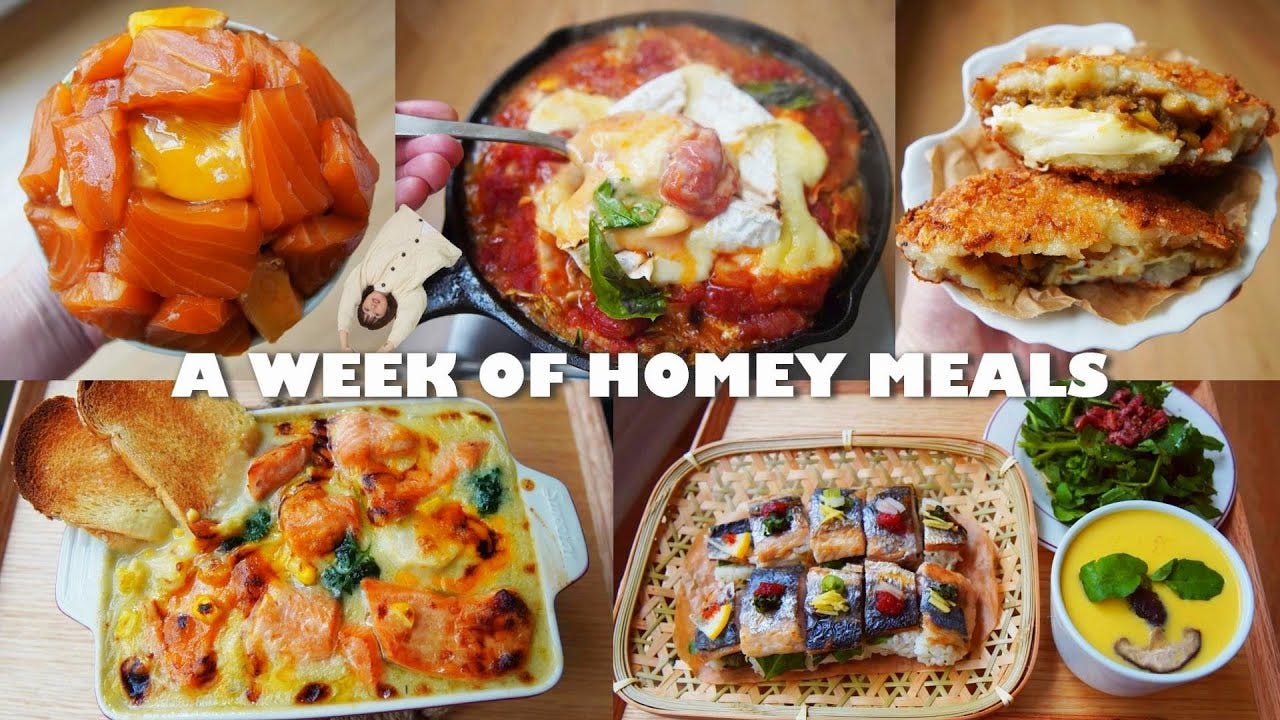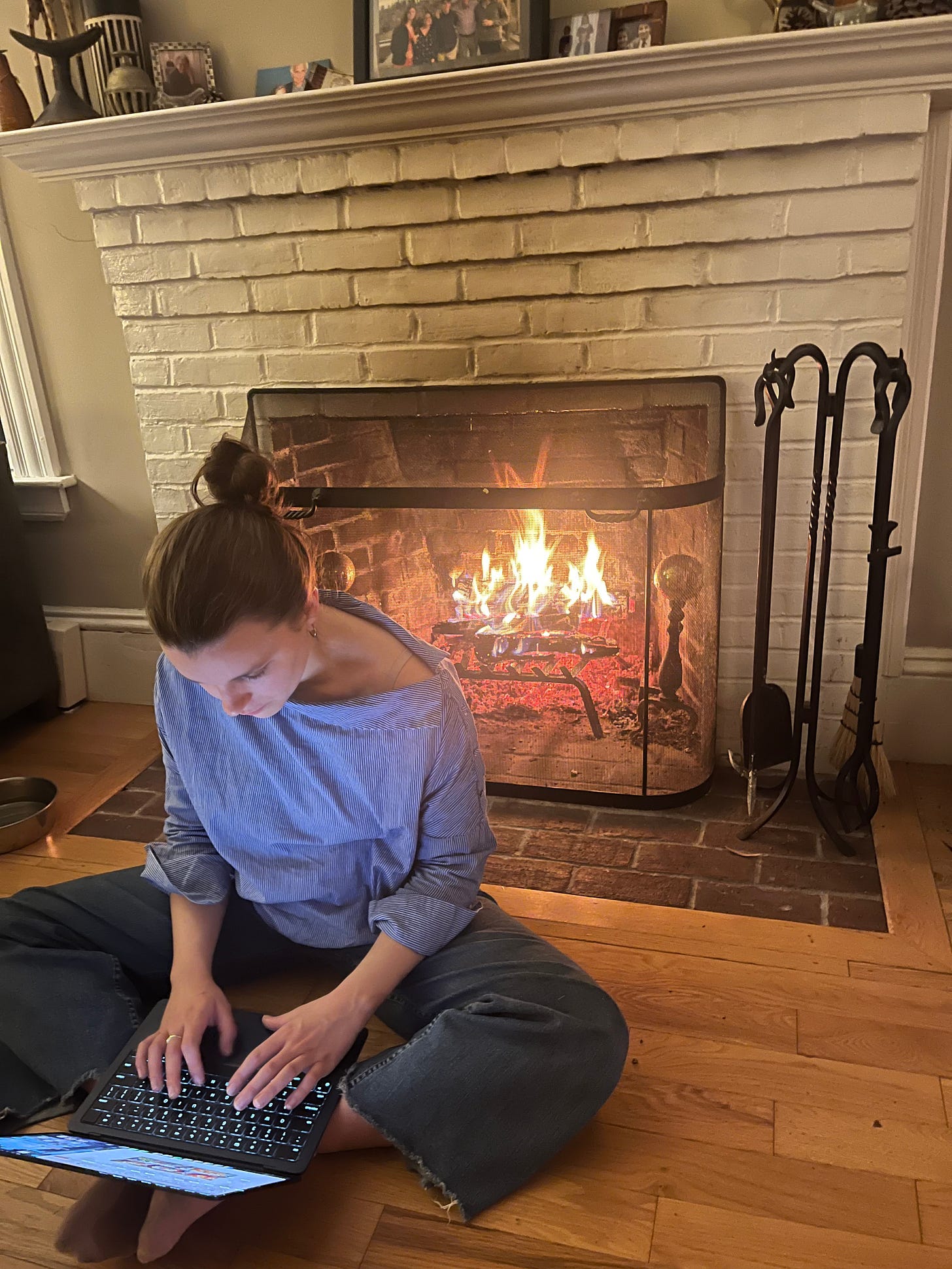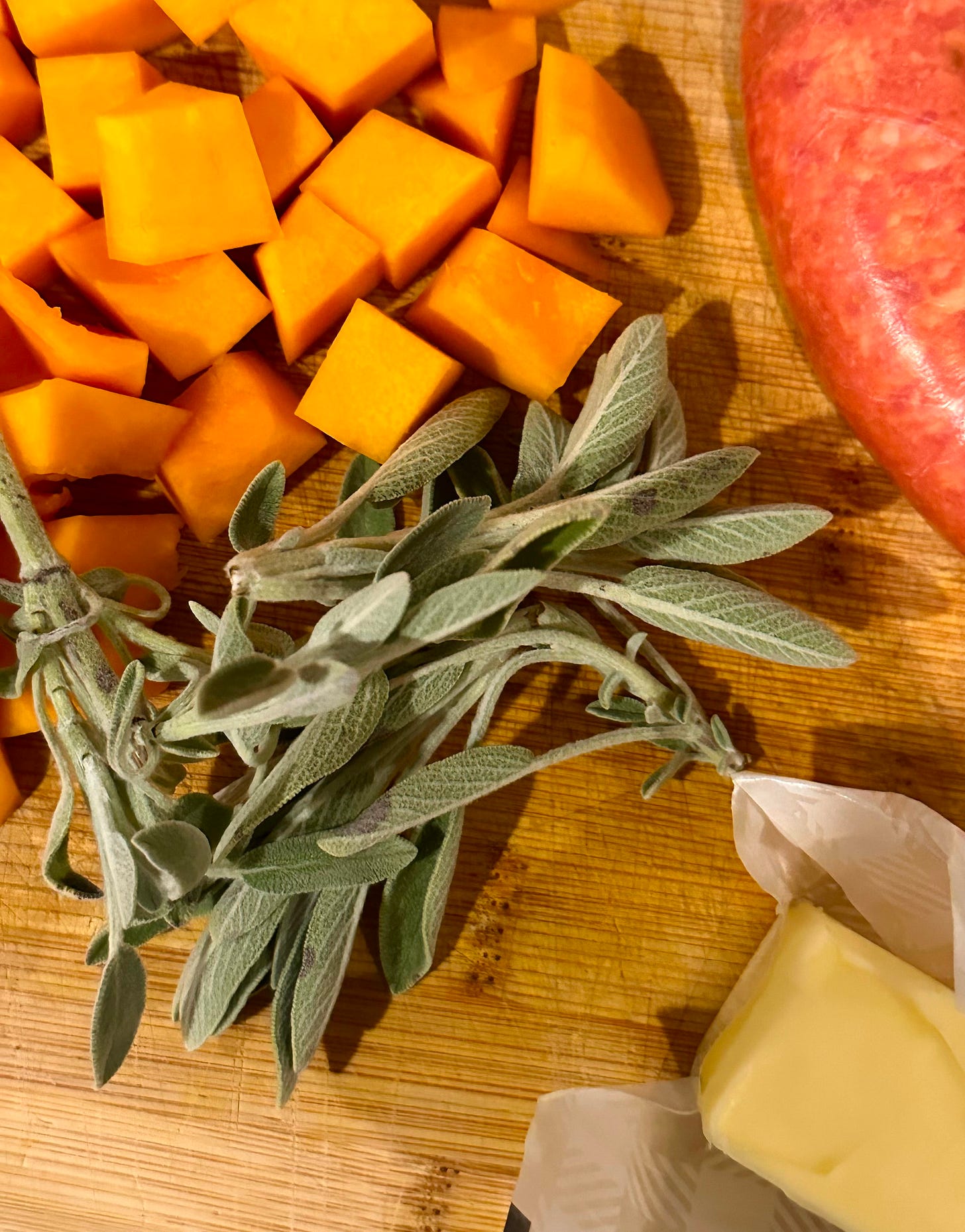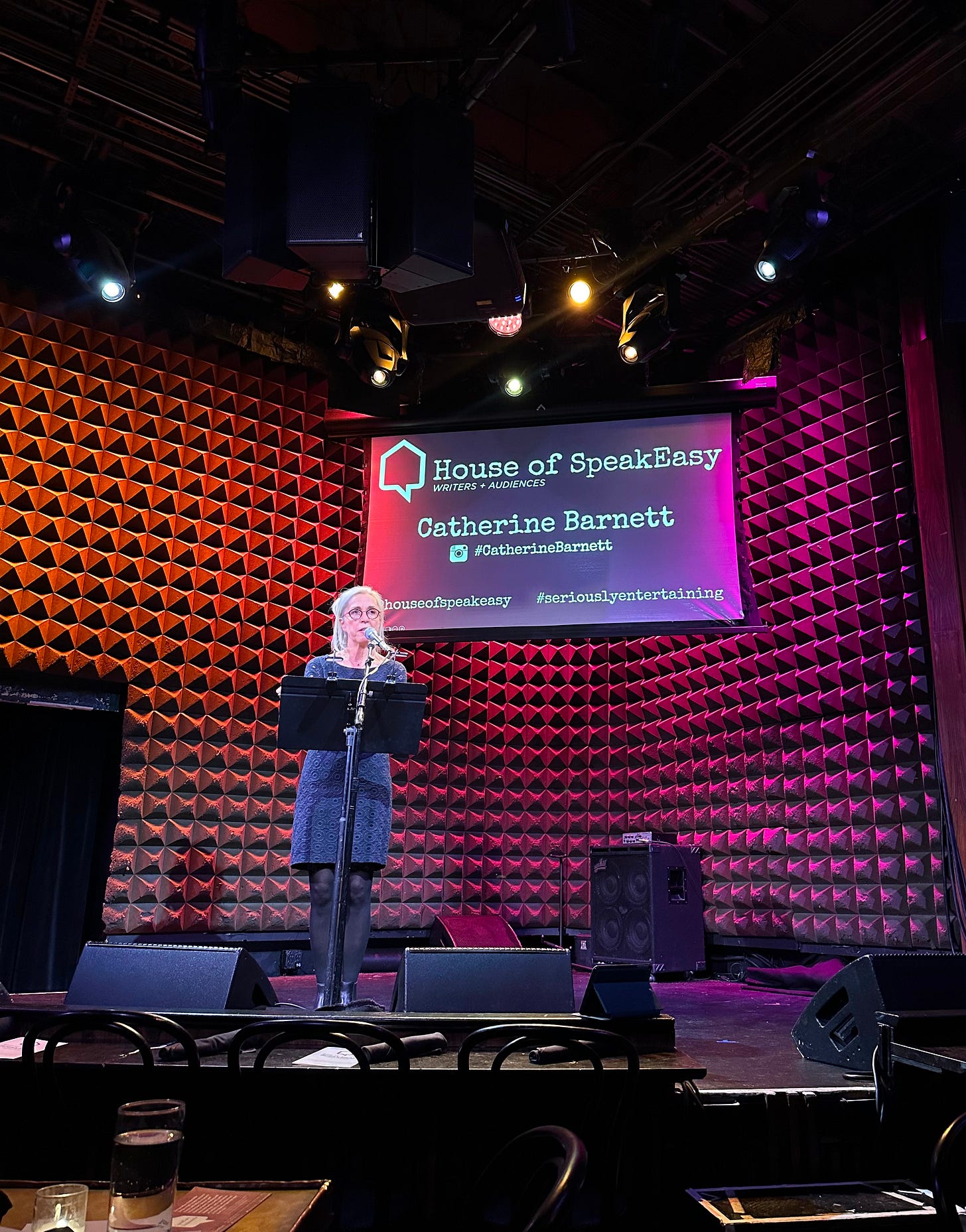Hello from Massachusetts, where I’m perched directly in front of a fire my dad built. I’m heading back to Brooklyn tomorrow and am grateful to have had this past week at home with my family. I hope you all had as lovely a Thanksgiving as I did, spending time with people you love and eating your weight in buttery mash. Let’s end November with a few sweet somethings: a favorite autumnal pasta, a soothing YouTube channel, and a lesson I learned this month about creativity and life.
Sage Brown Butter Pasta with Squash & Sausage
Teo and I first made this pasta, a riff on this NYT Cooking recipe by Ali Slagle, last fall in Vermont, and I’ve already made it twice this fall, so I think it’s officially becoming a tradition. Some pastas don’t feel like a full meal to me, but this one feels so complete, with spicy sausage, sweet butternut squash, and a toasty, sagey brown butter sauce that coats every noodle. Here’s how I make it, using the same ingredients as Slagle’s recipe, but with a different approach:
(No specific ingredient amounts, because this is not an Official Recipe, and I encourage measuring by feel. Just make sure not to skimp on the butter.)
Peel, cube, and roast butternut squash with olive oil, salt, and black pepper at around 400℉ until tender (25 minutes or so, depending on the size of the cubes).
Meanwhile, remove the sausage casings and cook the sausage meat in a pot on the stovetop over medium-high heat. When the sausage is cooked, transfer it to a bowl and set it aside.
Add butter and several dry sage leaves to the same pot and cook until the butter has brown flecks and smells like heaven. Turn off the heat and add the roasted butternut squash and cooked sausage to the sagey brown butter.
Cook your pasta in salted boiling water. Reserve plenty of starchy pasta water.
Add a generous splash of starchy pasta water to the pot of buttery squash and sausage, and turn the heat back on. When the pasta is cooked, drain it and add it to the pot. Keep the heat on and toss toss toss to emulsify the pasta sauce, adding more pasta water as needed.
When the sauce is creamy, turn off the heat and serve up the pasta with lots of cracked black pepper. If you want to gild the lily, crushed toasted hazelnuts on top would be a dream.
Imamu Room
I have notifications on for one very worthy YouTube channel, and that is Imamu Room, a Japanese woman’s record of what she cooks for herself and her family at home in Canada. It’s a quiet channel, and not highly produced; it’s just Imamu, going grocery shopping, finding ingredients that remind her of home and new ingredients she wants to try out, padding around her small kitchen at home, and, of course, cooking. Imamu has a remarkable 1.3 million subscribers, a following she built through a series of viral bento box-preparing videos, so I know I’m not alone in my affection for her content. There’s a lovely slowness and gentleness to her videos, and a playfulness to her cooking. When she tries something new and it goes awry, she giggles about it with her family and moves on.
From a cultural standpoint, I love to observe what she reaches for intuitively in the kitchen. She cooks rice at almost every meal, and uses dashi, sesame oil, and soy sauce with the same ease and frequency that I deploy when I reach for lemon, olive oil, and garlic. She deep-fries often, replicating her family’s favorite Japanese street food, like kushikatsu, deep-fried panko-crusted meat and vegetables on skewers. She deep-fries as often as I scramble eggs to eat with buttered toast. It’s beautiful. If you need to unwind (don’t we all?), I highly recommend watching Imamu’s videos.

Call It An Aardvark
Teo and I recently attended a House of Speakeasy event at Joe’s Pub, a performance space and restaurant within The Public Theater, with two of our friends, Ethan and Olivia. House of Speakeasy, I learned, is a literary organization connecting authors with audiences, and each month they host an evening of storytelling at Joe’s Pub — an informal literary cabaret, if you will. The theme that night was “Breaking and Changing,” and we listened to four authors from diverse backgrounds and genres speak, their messages loosely inspired by the theme.
The author whose words resonated with me the most that night was a poet named Catherine Barnett. She spoke about how she first became a poet, recalling a former writing teacher, Ruth Danon, who led improv writing exercises and, upon observing Barnett’s work, suggested that she might be a poet. When Barnett bristled at the notion of calling herself a poet (she thought it “arrogant” based on the way she was taught to study poetry), Danon said something brilliant: “Then don’t call it a poem. Call it an aardvark.”
Isn’t that perfect? When you’re not limited by beliefs about how something or someone should be or how they should be received, you free yourself to make the thing you’re meant to make. I’m trying to think of these newsletters as aardvarks, and whatever emerges when I cook or draw or sing as aardvarks, too: strange, long-snouted, nocturnal animals out there in the savannas, existing because they’re supposed to exist.
Sending you lots of love! This December is shaping up to be a busy but beautiful month of work and play.
More from me soon,
Phoebe x










As a beneficiary of the above pasta, I highly recommend.
ayo what up aardvark